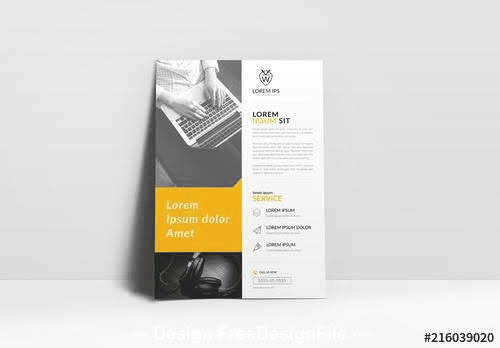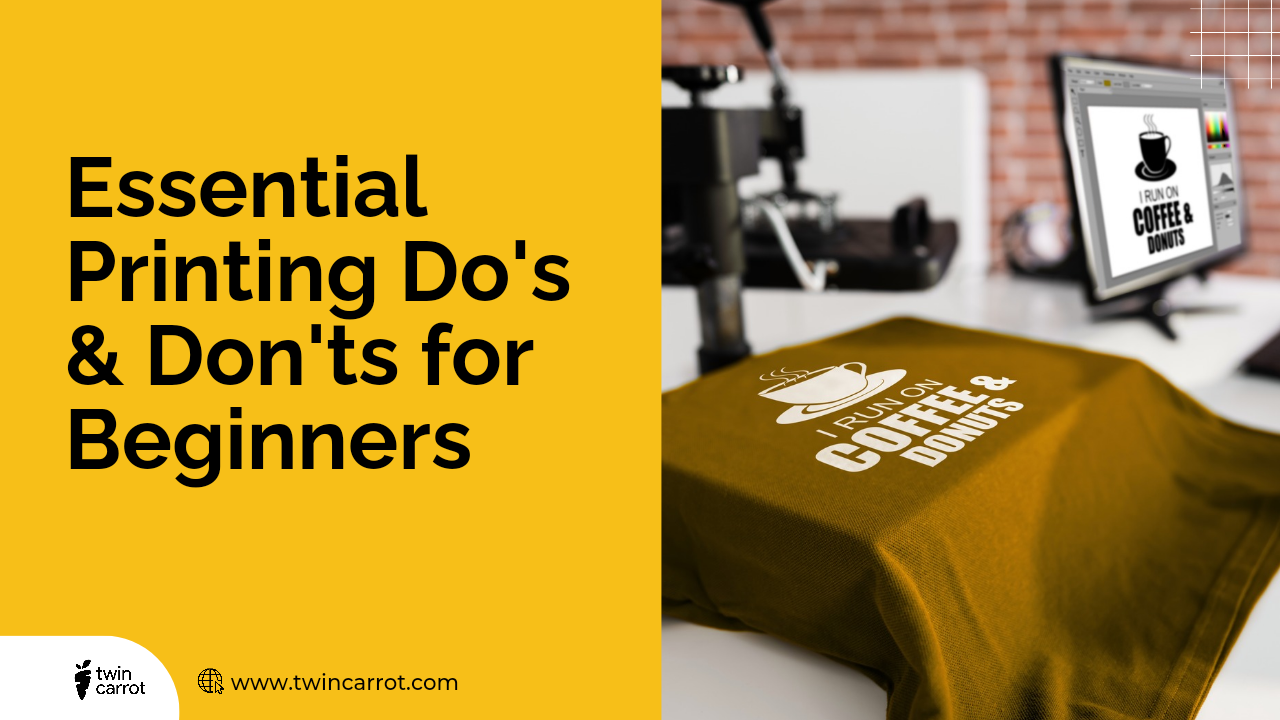Entering the world of printing can feel like stepping into a specialized trade filled with countless choices and potential pitfalls. I still recall the first time I walked into a print shop. I felt overwhelmed by the array of options, terminology, and possibilities.
Creating my first business cards was nothing short of a daunting experience because I was confused on the exact steps to take, plus, I didn’t want to make a mistake. It was then I learned that navigating the print production process required more than just a creative vision—it demanded a set of guidelines to ensure success.
For many beginners, the process may seem daunting just like it was for me. But understanding some fundamental principles, and following simple do’s and don’ts can lead to impressive results.
This article will provide you with essential printing do’s and don’ts for beginners that will help elevate your printing projects and enhance your overall experience.
The Importance of Following Do’s and Don’ts in Printing
In the world of print production, knowing what to do and what to avoid can profoundly impact the quality of your final product. Incorrect choices can lead to poor printing results, wasted resources, and missed deadlines, not to mention the frustration of dealing with errors that could have easily been prevented. According to the Printing Industries of America, nearly 40% of reprints could have been avoided with better planning and understanding of the printing process.
Arming yourself with crucial do’s and don’ts can save you time, money, and headaches—from choosing the right paper to understanding color reproduction. Let’s get into the nitty-gritty of printing do’s and don’ts for beginners.
Do: Explore the Different Types of Printing Methods
When you think about printing, you might picture a simple inkjet or laser printer. However, the world of printing is abundant with various methods, such as offset printing, digital printing, screen printing, and more. Each has its unique advantages and is suited for different types of projects.
– Offset Printing: This is the go-to choice for high-volume jobs. It’s cost-effective for large runs and provides high-quality output.
– Digital Printing: Best for smaller runs or projects requiring last-minute updates. It allows for easy customization but may have higher per-piece costs.
– Screen Printing: Ideal for apparel and promotional products. This method is excellent for bold colors and designs, but it is not always practical for intricate details or smaller runs.
Before you dive into a project, take the time to understand the pros and cons of each method based on your specific needs, budget, and timeline.
Don’t: Choose Cheap Paper or Inks
Many beginners make the mistake of underestimating the importance of quality materials in the printing process. Choosing low-cost paper or inks to save money may backfire when the final product lacks the desired crispness and vibrancy.
– Paper Selection: Invest in high-quality paper that suits your design and purpose. For instance, if you design a business card, a sturdy cardstock will leave a lasting impression. A lightweight paper may save you money upfront but could detract from your professional image.
– Ink Quality: Using subpar inks can also affect the overall quality of your print. High-quality inks deliver more vibrant colors and better longevity.
In general, budget cuts rarely work in your favor when it comes to printing. The saying “you get what you pay for” rings especially true in the print industry.
Do: Plan Your Design Carefully
One of the most critical steps in the printing process is establishing a strong design before hitting the print button. Take the time to develop a layout that resonates with your audience and aligns with your brand identity.
Design Tips for Beginners
– Use Proper Dimensions: Ensure your document size matches the print size to avoid unwanted cropping.
– Incorporate Bleed: It’s essential to add bleed—additional space outside your intended cut line. This helps prevent white edges in your final print, especially for designs that go to the edge of the paper.
– Be Mindful of Fonts and Colors: Choose fonts that are legible and colors that reflect your brand. Consider running a test print to see how colors appear on paper versus on screen.
Making design decisions thoughtfully at this stage can save you from expensive mistakes later on.
Don’t: Forget to Proofread Your Work
When excitement builds as you near the finish line of your printing project, it can be tempting to rush into production. However, overlooking proofreading can bring you back to square one.
Why This Is Critical
– Errors Can Be Costly: Spelling mistakes or incorrect information may seem insignificant, but they can drastically impact your project’s professionalism and clarity.
– Test Prints: If possible, always run a test print. This allows you to catch any errors before you proceed with a larger print run.
Investing a little extra time to double-check your work can save you significant costs associated with reprints and corrective measures.
Do: Tailor Your Project to Your Audience
Understanding your audience is key in creating effective print materials. Whether it’s a business flyer or a wedding invitation, each project should speak directly to its intended audience.
Audience-Foccussed Printing
– Engaging Design: Make sure your layout, colors, and content resonate with the preferences of your audience. For example, a modern design for a tech startup’s business cards will differ significantly from that of a vintage-themed wedding invitation.
– Appropriate Language and Tone: The text should align with the expectations of the audience. This entails using professional language for corporate materials while adopting a conversational tone for casual events.
Your audience’s preferences shape their engagement with your printed materials, so take their needs and tastes into account during the design process.
Don’t: Go Overboard with Add-Ons

While embellishments can add creativity to your print project, overcomplicating your design can backfire. Beginners sometimes nail the basics but then proceed to add excessive graphics, textures, or colors—as a result, the message gets muddled.
Keep It Simple
– Minimalism is Key: Oftentimes, less is more. A clean and straightforward design is often more impactful than a busy one. Stick to a few colors and a coherent design style to convey your message effectively.
– Producing Multiple Versions: If you want a touch of variety, consider creating multiple versions of your material instead of cluttering a single piece. This allows you to explore different designs without overwhelming your original concept.
Streamlining your design aids not only in clarity but also in production ease.
Do: Gather Opinions Before Finalizing
Feedback is an invaluable tool in the print production process. Before moving forward with printing, reach out for input from peers or mentors.
The Feedback Loop
– Pilot Testing: Share your designs with a select audience to gauge the reactions. Assessing their thoughts could lead to valuable insights and improve your final result.
– Choosing Reliable Sources: Make sure the people you ask for feedback are representative of your target audience. Their opinions will reflect how well your print project meets market expectations.
Utilizing feedback effectively can unveil blind spots you may have missed, improving your overall project greatly.
Don’t: Skip Professional Services
Sometimes, the allure of DIY print projects may overshadow the benefits of hiring professionals.
While there are numerous resources available to assist beginners, the expertise of a professional can save you time and improve your results dramatically.
The Benefits of Hiring Experts
– High-Quality Results: A professional printer can lead you through the process, ensuring technical details (like DPI, color profiles, and material suitability) are met.
– Access to Resources: Professionals usually have access to advanced printing technologies and a wide variety of materials, allowing for a range of options tailored to your needs.
Engaging professionals may come with a higher upfront cost but can pay off in the long run through superior results and reduced headaches.
Conclusion
Embarking on a printing project can be thrilling yet overwhelming for beginners. By sticking to the essential printing do’s and don’ts outlined in this article, you’ll be far less likely to encounter common pitfalls. It’s essential to invest time in research, choose quality materials, thoroughly proofread, understand your audience, maintain simplicity, seek feedback, and utilize professional assistance where necessary.
Every printed piece has the power to communicate your message effectively—so give yourself the best chance at success. As you begin to take on printing projects, always remember that preparation is key, and knowing the do’s and don’ts can streamline the journey from concept to print.
Start your printing journey by implementing these guidelines today, and watch as your projects flourish in quality and impact. If you have any experiences, questions, or tips about printing, feel free to share below! Let’s build a community of informed and inspired printers!

